DNA perlu diambil semula, DNA dulu dah lama, tak boleh pakai. Kesian juga memikirkan boss kita ni, tak kan tak ada penasihat sains yang menasihatkan beliau pasal DNA ni, kalau penasihat Ugama bertaraf menteri ada , penasihat wanita pun ada takkan yang nak menasihat tentang DNA tak ada, buat malu kat dunia saja aduhai tuan wazir kabir .
Kalau kata darah tu dah lama, tak boleh nak test, tak pa la juga, tapi DNA bukan orang nak test dan terus hilang atau hancur macam tu, la ni zaman komputer, nak bercakap tu berlapik la sikit. Kalau tak tahu hujung pangkal apa benda DNA , tok sah lah bercakap, diam sudah lah. Ana nak paste sikit pasal DNA ni yang boleh didapati dari Wikipedia, tolong baca aduhai sahabat no!!
DNA fingerprinting begins by extracting DNA from the cells in a sample of blood, saliva, semen, or other appropriate fluid or tissue.
RFLP analysis
Main article: Restriction fragment length polymorphism
The first methods used for DNA fingerprinting involved restriction enzyme digestion, followed by Southern blot analysis. Although polymorphisms can exist in the restriction enzyme cleavage sites, more commonly the enzymes and DNA probes were used to analyze VNTR loci. However, the Southern blot technique is laborious, and requires large amounts of undegraded sample DNA. Also, Jeffreys' original technique looked at many minisatellite loci at the same time, increasing the observed variablitiy, but making it hard to discern individual alleles (and thereby precluding parental testing). These early techniques have been supplanted by PCR-based assays.
PCR analysis
Main article: polymerase chain reaction
With the invention of the polymerase chain reaction (PCR) technique, DNA fingerprinting took huge strides forward in both discriminating power and the ability to recover information from very small (or degraded) starting samples. PCR greatly amplifies the amounts of a specific region of DNA, using oligonucleotide primers and a thermostable DNA polymerase. Early assays such as the HLA-DQ alpha reverse dot blot strips grew to be very popular due to their ease of use, and the speed with which a result could be obtained. However they were not as discriminating as RFLP. It was also difficult to determine a DNA profile for mixed samples, such as a vaginal swab from a sexual assault victim.
Fortunately, the PCR method is readily adaptable for analyzing VNTR loci. In the United States the FBI has standardized a set of 13 VNTR assays for DNA typing, and has organized the CODIS database for forensic identification in criminal cases. Similar assays and databases have been set up in other countries. Also, commercial kits are available that analyze single nucleotide polymorphisms (SNPs). These kits use PCR to amplify specific regions with known variations and hybridize them to probes anchored on cards, which results in a colored spot corresponding to the particular sequence variation.
STR analysis
Main article: Short tandem repeats
The most prevalent method of DNA fingerprinting used today is based on PCR and uses short tandem repeats (STR). This method uses highly polymorphic regions that have short repeated sequences of DNA (the most common is 4 bases repeated, but there are other lengths in use, including 3 and 5 bases). Because different people have different numbers of repeat units, these regions of DNA can be used to discriminate between individuals. These STR loci (locations) are targeted with sequence-specific primers and are amplified using PCR. The DNA fragments that result are then separated and detected using electrophoresis. There are two common methods of separation and detection, capillary electrophoresis (CE) and gel electrophoresis.
The polymorphisms displayed at each STR region are by themselves very common, typically each polymorphism will be shared by around 5 - 20% of individuals. When looking at multiple loci, it is the unique combination of these polymorphisms to an individual that makes this method discriminating as an identification tool. The more STR regions that are tested in an individual the more discriminating the test becomes.
From country to country, different STR-based DNA-profiling systems are in use. In North America systems which amplify the CODIS 13 core loci are almost universal, while in the UK the SGM+ system, which is compatible with The National DNA Database in use. Whichever system is used, many of the STR regions under test are the same. These DNA-profiling systems are based around multiplex reactions, whereby many STR regions will be under test at the same time.
Capillary electrophoresis works by electrokinetically (movement through the application of an electric field) injecting the DNA fragments into a thin glass tube (the capillary) filled with polymer. The DNA is pulled through the tube by the application of an electric field, separating the fragments such that the smaller fragments travel faster through the capillary. The fragments are then detected using fluorescent dyes that were attached to the primers used in PCR. This allows multiple fragments to be amplified and run simultaneously, something known as multiplexing. Sizes are assigned using labeled DNA size standards that are added to each sample, and the number of repeats are determined by comparing the size to an allelic ladder, a sample that contains all of the common possible repeat sizes. Although this method is expensive, larger capacity machines with higher throughput are being used to lower the cost/sample and reduce backlogs that exist in many government crime facilities.
Gel electrophoresis acts using similar principles as CE, but instead of using a capillary, a large polyacrylamide gel is used to separate the DNA fragments. An electric field is applied, as in CE, but instead of running all of the samples by a detector, the smallest fragments are run close to the bottom of the gel and the entire gel is scanned into a computer. This produces an image showing all of the bands corresponding to different repeat sizes and the allelic ladder. This approach does not require the use of size standards, since the allelic ladder is run alongside the samples and serves this purpose. Visualization can either be through the use of fluorescently tagged dyes in the primers or by silver staining the gel prior to scanning. Although it is cost-effective and can be rather high throughput, silver staining kits for STRs are being discontinued. In addition, many labs are phasing out gels in favor of CE as the cost of machines becomes more manageable.
The true power of STR analysis is in its statistical power of discrimination. In the US, there are 13 core loci (DNA locations) that are currently used for discrimination in CODIS. Because these loci are independently assorted (having a certain number of repeats at one locus doesn't change the likelihood of having any number of repeats at any other locus), the product rule for probabilities can be applied. This means that if someone has the DNA type of ABC, where the three loci were independent, we can say that the probability of having that DNA type is the probability of having type A times the probability of having type B times the probability of having type C. This has resulted in the ability to generate match probabilities of 1 in a quintillion (1 with 18 zeros after it) or more.
The United States maintains the largest DNA database in the world: The Combined DNA Index System, with over 5 million records as of 2007[2]. The United Kingdom maintains the National DNA Database (NDNAD), which is of similar size. The size of this database, and its rate of growth, is giving concern to civil liberties groups in the UK, where police have wide-ranging powers to take samples and retain them even in the event of acquittal.[3]
The U.S. Patriot Act of the United States provides a means for the U.S. government to get DNA samples from other countries if they[clarify] are either a division of, or head office of, a company operating in the U.S. Under the act, the American offices of the company can't divulge to their subsidiaries/offices in other countries the reasons that these DNA samples are sought or by whom.[citation
Negara maju dah ada data DNA sampai berjuta-juta, bila berlaku sesuatu yang memerlukan dicari identiti, tak kira lah orang jahat ke, nak cari saudara ke, maka dari data DNA yang tersimpan boleh diketahui siapa mereka itu. Data ni boleh simpan sampai bila-bila, tak rosak, malainkan ada manusia yang bagi hilang dari dalam bank data macam dalam jabatan imegresion yang hilangkan nama Altantunya masuk Malaysia tu lah.
Bila data dah ada, maka kalau didapati apa juga tisu atau rambut, atau bendalir daripada badan seseorang ada pada badan orang lain, maka bendalir itulah pemilik pelaku maksiat tersebut. Kalau kita renung kisah Norita Shamsudin yang didapati dalam kemaluan dia disebut dalam mahkamah ada tiga jenis DNA yang berlainan dari air mani yang ditemui , maka tentulah kalau ada data dalam bank data DNA kita, dapat diketahui siapakah pemunya DNA tersebut, dan diketahui siapa yang melakukan kerja terkutuk kepada beliau sebelum beliau mati.
Dalam kes keengganan DSAi nak beri darah dia untuk DNA sekali lagi, tak kan lah rekod DNA beliau pada tahun 1998 sudah dihilangkan oleh pihak Jabatan Kimia. Apa yang rakyat mushkil sekarang dan dirisaukan oleh DSAI adalah jika darah yang diambil itu dicalitkan kedalam punggung SI Saiful dan kemudian Dr ambil sampel dari punggung dia, bila ditest, maka didapati DNA darah tersebut adalah darah DSAI, maka boleh disahkan bahawa pelakunya adalah pemilik DNA itulah, begitu mudah sekali perkara ini boleh dibuat dan dilakukan, oleh itu maka Islam meletakkan saksi yang melihat dengan terang 4 orang sebelum pertuduhan boleh dibuat.
Baik, orang kata tak kan lah Dr yang melakukan pemeriksaan nak buat kerja macam tu, tak kan polis nak buat kerja macam tu, semua ini sudah ada dalam sejarah negara kita , dah ada precedent, 1998, semuanya ada sampai DSAI buat report polis terhadap dua manusia yang pernah menyiasat dan mendakwa dia, sampai Trivoli villa tak ada lagi pun, tuduhan boleh dibuat, lepas tu ubah tarikh, dan hakim tak buang kes pulak tu. Kalau kes lain ana rasa pendakwa tu tentu dah kena tendang keluar mahkamah oleh hakim.
Mengikut lawyer DSAI Sivarasa, bahan yang ada DNA (semen la kut, tak kan atas tilam nak calit darah kut) ditanam dalam tilam, dan tilam itu dutest kesan DNA melalui test diatas maka didapati adalah DNA DSAI atas tilam yang diusung tu, begitu mudah sekali, hanya macam copy and paste saja.
Itulah kalau tak takut kepada Allah, maka macam -macam boleh manusia lakukan.
Ini yang dikatakan dunia, history will repeat by itself.
Sebab tu minggu lepas kami riuh bertengkar dengan anak mantan PM wakil dari Jerlun yang kata dia ada bukti DSAI buat kerja liwat tu, kami minta dia taubat dan tarik balik supaya tak terkena hukum qazaf yakni sebat 80 rotan kalau dia tak tenguk betul-betul apa yang berlaku, kes ni bukan boleh dengar cerita orang macam tu saja, sampai serak suara ana, dan hampir pecah buku ana hampuk atas meja suruh dia tarik balik bila dia kata ujian DNA dan hukum sekarang lebih baik dari Islam. Nanti ana pastekan handsat parlimen kalau dah siap.
Kembalilah kepada hukum Allah. pasti semuanya selamat.
Saturday, July 19, 2008
Subscribe to:
Post Comments (Atom)
Lawat Parlimen
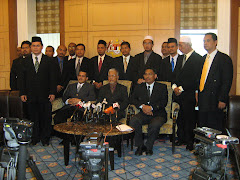
ADUN Kedah diketuai Speaker dan Timbalan telah datang mengunjungi Parlimen baru-baru ni untuk menyaksikan hari ini dalam sejarah bekas mangsa kezaliman ISA dua kali YB Sdr Yusof Husin mengangkat sumpah sebagai Ahli Dewan Negara. Kami hanya sempat berbicara seketika waktu rehat dan selepas itu mereka mempunyai agenda lain untuk dibereskan. Diharap dimasa akan datang kita akan dapat melakukan yang lebih baik lagi apabila kehadiran direncanakan dengan teliti melalui Setiausaha Sekretariat parlimen PAS Sdr Wan Johari Wan Omar.



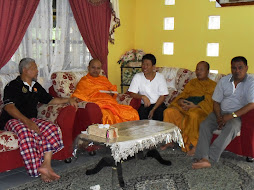


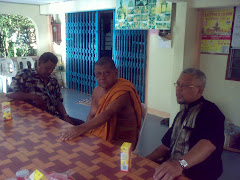
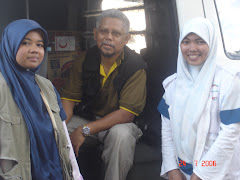


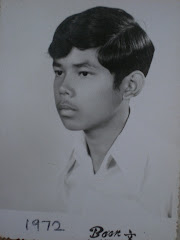
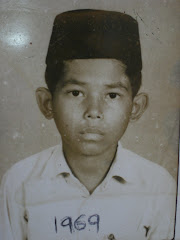


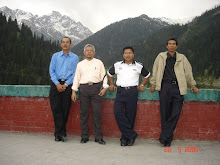


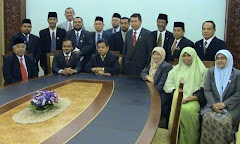



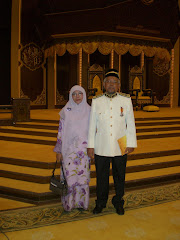
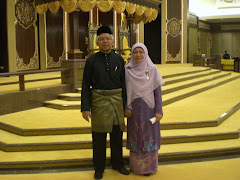
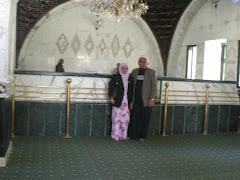


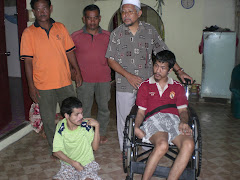
No comments:
Post a Comment